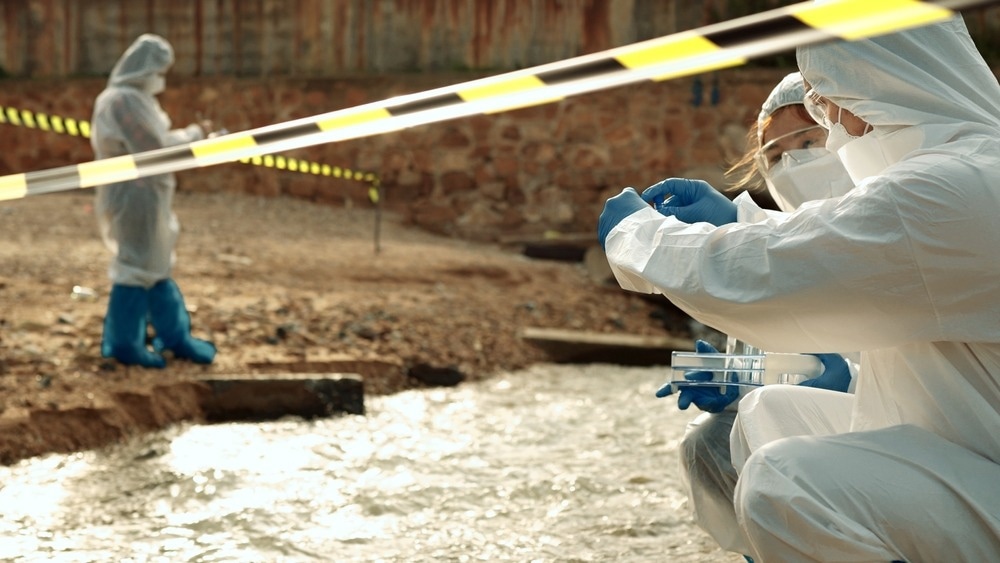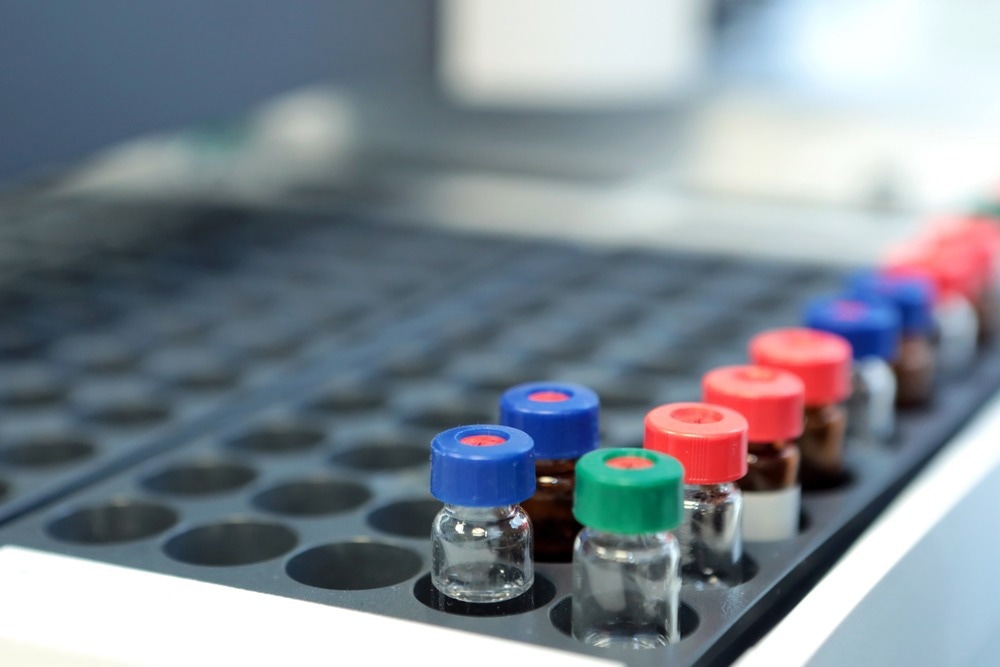Environmental Mass Spectrometry is a powerful tool for detecting and analyzing trace amounts of pollutants in environmental samples. This article offers an overview of environmental mass spectrometry, its applications in environmental analysis, recent research advancements, and prospects.

Image Credit: MMD Creative/Shutterstock.com
Mass spectrometry has advanced significantly over the years and is now widely employed in environmental analysis, partly due to the establishment of pollution research institutes and the introduction of administrative regulations.
The sensitivity and versatility of the technique make it an ideal choice for quantitative and qualitative analysis of environmental contaminants in various matrices, such as soil, water, sediment, and biomedical samples.
Environmental mass spectrometry is a set of highly effective analytical techniques for identifying and quantifying numerous compounds in environmental samples. The procedure involves ionizing chemical molecules, separating them according to their mass-to-charge ratio, and then detecting them, allowing for the detection of minute quantities of impurities.
Environmental mass spectrometry provides vital data underpinning policy decisions impacting people and the environment.
With growing concern over the environmental impact of human activities, environmental mass spectrometry has become increasingly important in identifying potential contamination sources and reducing exposure hazards to human health and the environment.
What Types of Techniques Are Used in Environmental Mass Spectrometry?
Gas Chromatography-Mass Spectrometry (GC-MS):
The gas chromatography-mass spectrometry (GC-MS) is a highly accurate analytical tool for identifying individual chemical mixture components. It works by separating the mixture using heat and inert gas and then analyzing the separated components at a molecular level.
GC-MS is commonly used in various industries, such as environmental, food, and forensics, to detect volatile contaminants with a molecular weight typically less than 700 amu.
Liquid Chromatography-Mass Spectrometry (LC-MS):
LC-MS is a modern analytical technique that combines physical separation and mass-based detection to identify target compounds or analytes. Its high sensitivity, selectivity, and accuracy make it a popular choice for detecting small amounts of various analytes such as pesticides, drug metabolites, natural product extracts, and food impurities.
Inductively Coupled Plasma Mass Spectrometry (ICP-MS):
ICP-MS is a form of mass spectrometry that can identify metals and some nonmetals at extremely low concentrations, as low as 1 part per quadrillion.
In ICP-MS, a plasma generates ions that are then analyzed by a mass spectrometer. As a result, it finds applications in many industries, such as geochemical analysis, environmental monitoring, pharmaceutical analysis, and metallurgy.
Matrix-Assisted Laser Desorption Ionization Time-Of-Flight Mass Spectrometry (MALDI-TOF MS):
MALDI-TOF MS is a high-throughput that can quickly analyze many microbial cells by comparing their protein fingerprints to a database of reference spectra using algorithms built into commercially available systems. It is commonly used for identifying and typing microorganisms and has gained significant attention recently.
The technique is known as a "soft" ionization method, which means it causes little or no fragmentation and enables the identification of molecular ions of analytes even in complex mixtures of biopolymers.

Image Credit: Cergios/Shutterstock.com
Applications of Environmental Mass Spectrometry
Monitoring Air Quality
Environmental mass spectrometry can detect multiple compounds in complex mixtures, including potentially hazardous air pollutants like ozone and secondary aerosol particles.
Proton-transfer-reaction mass spectrometry (PTR-MS) is a new and increasingly popular technique used in air quality monitoring due to its high sensitivity and speed, which allows for detecting air pollutants in low concentrations without requiring the separation of the compounds in a sample.
Investigating Soil Contamination
Soil analysis has been a priority for many years, as it regulates water supply and recycles nutrients. The use of mass spectrometry is crucial in monitoring the soil for organic contaminants, including fertilizers, pesticides, and industrial chemicals. These contaminants can pollute water sources if not detected and removed timely.
Assessing Water Quality
Water quality testing is crucial for human safety, particularly surface and groundwater sources. The analysis of groundwater is increasingly vital due to the effects of climate change, which can cause floods and droughts, affecting its availability.
Monitoring of Pesticide Residues in Food
Mass spectrometry is a highly sensitive technique, so it can detect even very low levels of pesticides. This makes it ideal for analyzing food and environmental samples, where pesticide residues may be present at very low levels.
Gas chromatography-mass spectrometry (GC-MS) is a widely used analytical tool to detect pesticides in food. It is a sensitive technique that can identify specific types of pesticides in low concentrations. However, GC-MS is time-consuming and requires skilled interpretation of results.
Recent Research and Development
Low-Level Detection of Radioactive Contamination in The Environment
In a study published in Analytical Chemistry, a team of French researchers developed a new method using inductively coupled plasma-tandem mass spectrometry (ICP-MS/MS) for low levels of detection of radioactive contamination in the environment.
This method involves inductively coupled plasma-tandem mass spectrometry (ICP-MS/MS) to measure the 135Cs/137Cs isotopic ratio, which can differentiate between radiocesium released from nuclear weapons testing and nuclear power plants. This ratio is essential in determining the source of radiocesium in the environment and developing remediation strategies.
The method is highly selective and produces accurate results for low levels of contamination, making it an important tool for understanding the impact of radioactive contamination on human and environmental health.
New Method for the Characterization and Quantitative Analysis of Platinum Nanoparticles in Road Dust
In a study published in Spectrochimica Acta Part B: Atomic Spectroscopy, Spanish researchers developed a new mass spectrometry method to quantify and detect platinum nanoparticles (PtNPs) in road dust.
PtNPs are used in catalytic converters, and their accumulation in the environment raises concerns about their impact on the ecosystem and human health. The new method involves sonication probe-assisted extraction, centrifugation-based separation, and dilution before using single particle inductively coupled plasma mass spectrometry (SP-ICP-MS) analysis.
The researchers achieved a 100±1% recovery rate and found that PtNPs accounted for 11-27% of the Pt content in road dust samples.
The method can provide information on PtNP concentration and size in less than 11 minutes, improving the detection and quantification of PtNPs for environmental risk assessments.
PFAS Chemistry Complexity Unraveled with Advanced Mass Spectrometry
In a study published in Environmental Science & Technology, researchers used advanced mass spectrometry to analyze the complex chemistry of PFAS, a family of human-made chemicals harmful to our bodies and the environment.
The powerful tool helped them identify and catalog thousands of PFAS compounds, including previously unknown ones, which can help future studies find solutions to these chemicals' health and environmental impacts.
Future Outlooks
The future of environmental mass spectrometry looks promising as mass spectrometers become increasingly sensitive, portable, selective, and economical. With increased sensitivity, environmental mass spectrometry can monitor and detect even trace levels of pollutants below the currently regulated levels.
Improved selectivity will enable the identification of specific pollutants present in a sample. In addition, portability will enable scientists to collect and analyze samples in the field, and decreased costs will make environmental mass spectrometry more accessible to more organizations.
More from AZoOptics: The Future of Lignin Research Using Mass Spectrometry
References and Further Reading
Calderaro, A., Arcangeletti, M. C., Rodighiero, I., Buttrini, M., Gorrini, C., Motta, F., ... & De Conto, F. (2014). Matrix-assisted laser desorption/ionization time-of-flight (MALDI-TOF) mass spectrometry applied to virus identification. Scientific reports, 4(1), 6803. https://doi.org/10.1038/srep06803
Hutzinger, O., Karasek, F. W., & Safe, S. (Eds.). (2013). Mass spectrometry in environmental sciences. Springer Science & Business Media.
Lebedev, A. (Ed.). (2012). Comprehensive environmental mass spectrometry. ILM Publications.
Magre, A., Boulet, B., Isnard, H., Mialle, S., Evrard, O., & Pourcelot, L. (2023). Innovative ICP-MS/MS Method To Determine the 135Cs/137Cs Ratio in Low Activity Environmental Samples. Analytical Chemistry. https://doi.org/10.1021/acs.analchem.3c00207
Sánchez-Cachero, A., Fariñas, N. R., Jiménez-Moreno, M., & Martín-Doimeadios, R. C. R. (2023). Quantitative analysis and characterization of PtNPs in road dust based on ultrasonic probe assisted extraction and single particle inductively coupled plasma mass spectrometry. Spectrochimica Acta Part B: Atomic Spectroscopy, 203, 106665. https://doi.org/10.1016/j.sab.2023.106665
Disclaimer: The views expressed here are those of the author expressed in their private capacity and do not necessarily represent the views of AZoM.com Limited T/A AZoNetwork the owner and operator of this website. This disclaimer forms part of the Terms and conditions of use of this website.